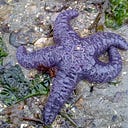Member-only story
RADICALIZERS
“Beautiful Joe,” The Dog Who Taught Us Empathy
For generations of my family, the late 19th century novel “Beautiful Joe” has served as a model for morality
It’s high summer in Georgian Bay, and I’m with my cousin on the verandah at the cottage. The air smells like history with a dash of vanilla, or maybe that’s from the book I’m holding. The kids — now adults — are down at the smooth granite shore, swimming, diving, laughing, playing stick with the dogs, when Bella takes off again. They shout for her, but the dog doesn’t respond. A black lab with a year under her belt, Bella’s swimming across the bay, trying to catch the bubbles created by her paddling, impervious to the fact that each stroke takes her further from shore. If we let her go off on her own, she’d drown, but that would make us negligent and cruel. One of the kids swims out to rescue her from the danger of her own joy.
Bella shakes off, and the kids go back to what they were doing. The dogs clamber up the humped rock to the verandah, their nails clicking against the striated Canadian Shield stone, and my cousin and I pick up where we left off before Bella’s rescue: talking about books. I’m holding the late 19th century novel Beautiful Joe by Margaret Marshall Saunders; I haven’t read the book since I was a…

